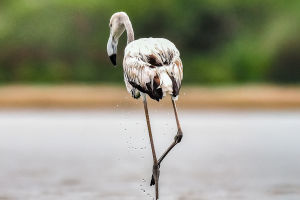Jellyfish—one of the ocean’s most captivating yet mysterious creatures. They’ve been around for millions of years, predating even the dinosaurs. With their delicate, translucent bodies and graceful movements, they’ve captured the imagination of scientists and ocean lovers alike.
But beneath their elegant exterior lies a world of secrets that many of us might not know. In this article, we’ll uncover the truth behind these ethereal creatures, exploring their fascinating biology, environmental importance, and the unexpected ways they affect our lives.
The Amazing Anatomy of Jellyfish
Jellyfish may look fragile, but their anatomy is perfectly designed for survival in the ocean. Their bodies are composed mainly of water, making them incredibly light and capable of floating effortlessly in the currents. Unlike most animals, jellyfish don’t have a brain or heart. Instead, they rely on a simple nerve net to sense their environment and coordinate movement.
This simplicity allows them to move in synchronized waves, drifting through the ocean with ease. Despite their lack of complex organs, jellyfish are still highly effective predators, using their tentacles to capture food and defend themselves.
The Lifecycle: From Larva to Majestic Adult
The life cycle of a jellyfish is nothing short of fascinating. They start as tiny, free-swimming larvae called planulae. These larvae eventually settle on the ocean floor and develop into polyps, where they can remain for several years. When environmental conditions are right, the polyps undergo a transformation, budding off new medusae (the adult jellyfish form).
These newly formed jellyfish then swim off into the ocean to begin their own life cycle. Some jellyfish can reproduce both sexually and asexually, which helps them thrive in various environments. This dual approach to reproduction ensures that jellyfish populations remain robust, even in challenging conditions.
Jellyfish and Their Stinging Power
Perhaps the most famous feature of jellyfish is their ability to sting. Their tentacles are lined with specialized cells known as nematocysts, which contain venom. When a jellyfish comes into contact with prey or a potential threat, these cells release their venom, paralyzing or killing the target. While some jellyfish stings are harmless, others can be incredibly dangerous, causing severe pain or even death.
The venom of the box jellyfish, for example, is among the most potent in the world. While the stings may be alarming, jellyfish use their venom primarily to capture food, not as a weapon against humans.
Jellyfish in the Ecosystem: The Silent Heroes
Despite their reputation for being dangerous or bothersome, jellyfish play a crucial role in the marine ecosystem. They help regulate populations of small fish and plankton, which in turn supports the food chain. In some areas, jellyfish even serve as a food source for larger animals like sea turtles, which have developed a tolerance to their stings.
Jellyfish also contribute to the balance of nutrients in the ocean, recycling organic matter and ensuring a healthy environment for marine life. So, while they may seem like passive drifters, jellyfish are actually active contributors to the health of our oceans.
Jellyfish Blooms: What’s Causing the Surge?
In recent years, there has been growing concern about the increasing number of jellyfish blooms—large, dense swarms of jellyfish that can sometimes overwhelm coastal areas. These blooms can disrupt fishing industries, damage coastal infrastructure, and even affect local tourism. Scientists believe that several factors are contributing to these blooms, including climate change, overfishing, and coastal pollution.
Warmer ocean temperatures provide a more favorable environment for jellyfish to thrive, while overfishing reduces the number of natural predators that keep jellyfish populations in check. As a result, jellyfish blooms are becoming more common, and their impact on human activities is becoming more significant.
A Creature of Wonders
Jellyfish are truly creatures of wonder—beautiful, deadly, and essential to the health of our oceans. Their mysterious nature continues to intrigue us, and their surprising contributions to the ecosystem remind us of the delicate balance that exists in the natural world. While it’s important to respect the dangers they pose, we should also recognize the vital role they play in maintaining the health of marine environments.
So, the next time you see a jellyfish floating by, take a moment to appreciate this ancient, extraordinary creature.
Lykkers, have you ever encountered a jellyfish during your travels? What was your experience? Share your thoughts in the comments below!


